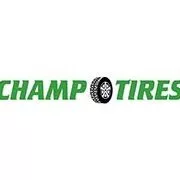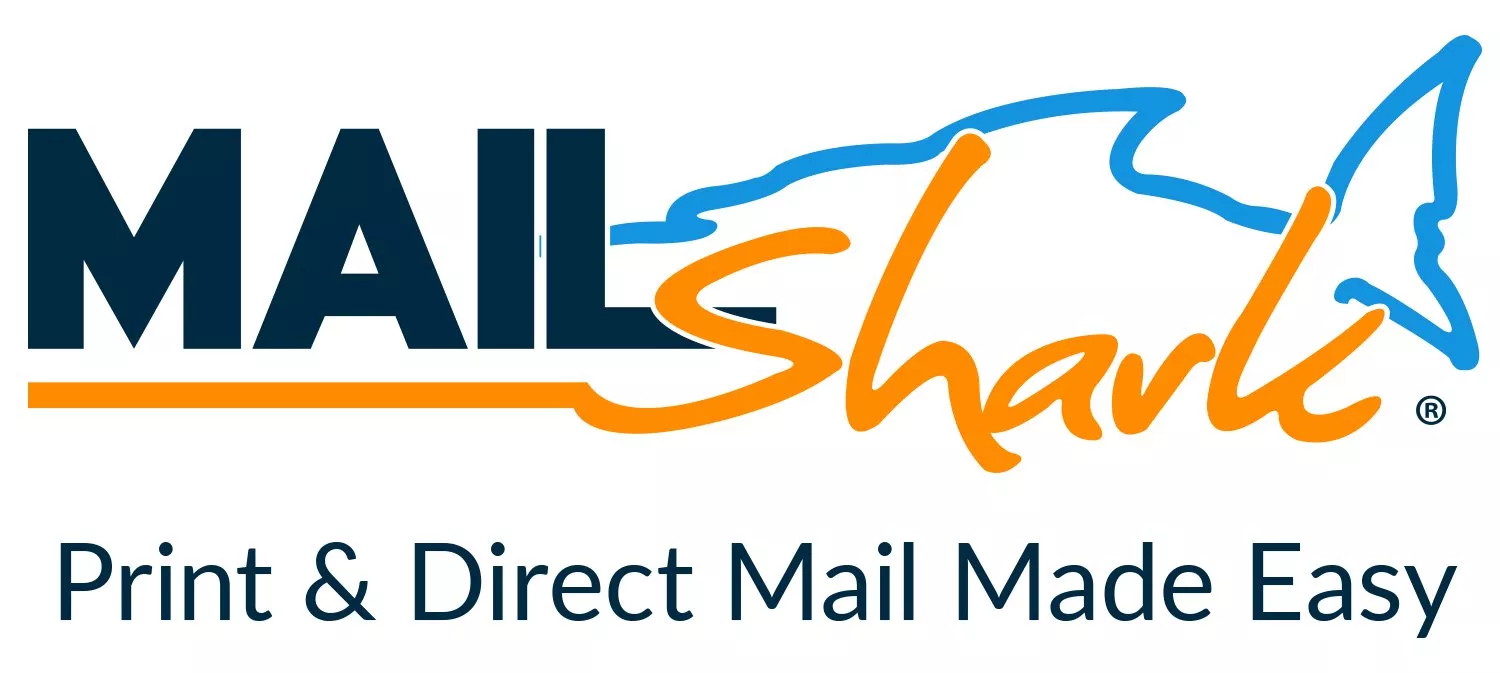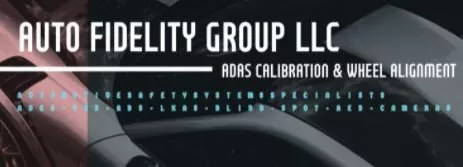Diagnostic Chart
-
Available Subscriptions
-
Have you checked out Joe's Latest Blog?
-
By Joe Marconi in Joe's Blog0 commentsIt always amazes me when I hear about a technician who quits one repair shop to go work at another shop for less money. I know you have heard of this too, and you’ve probably asked yourself, “Can this be true? And Why?” The answer rests within the culture of the company. More specifically, the boss, manager, or a toxic work environment literally pushed the technician out the door.
While money and benefits tend to attract people to a company, it won’t keep them there. When a technician begins to look over the fence for greener grass, that is usually a sign that something is wrong within the workplace. It also means that his or her heart is probably already gone. If the issue is not resolved, no amount of money will keep that technician for the long term. The heart is always the first to leave. The last thing that leaves is the technician’s toolbox.
Shop owners: Focus more on employee retention than acquisition. This is not to say that you should not be constantly recruiting. You should. What it does means is that once you hire someone, your job isn’t over, that’s when it begins. Get to know your technicians. Build strong relationships. Have frequent one-on-ones. Engage in meaningful conversation. Find what truly motivates your technicians. You may be surprised that while money is a motivator, it’s usually not the prime motivator.
One last thing; the cost of technician turnover can be financially devastating. It also affects shop morale. Do all you can to create a workplace where technicians feel they are respected, recognized, and know that their work contributes to the overall success of the company. This will lead to improved morale and team spirit. Remember, when you see a technician’s toolbox rolling out of the bay on its way to another shop, the heart was most likely gone long before that.
-
-
Similar Topics
-
By champtires
Premium Member Content
This content is hidden to guests, one of the benefits of a paid membership. Please login or register to view this content.
-
By JustTheBest
Premium Member Content
This content is hidden to guests, one of the benefits of a paid membership. Please login or register to view this content.
-
By carmcapriotto
Thanks to our Partners, NAPA TRACS, and Today's Class Tim Iezzi and Ira Waldman introduce their upcoming training class, "Labscope Essentials for the Ball Joint Guy," designed to build strong foundational skills in labscope diagnostics. Aimed at bridging the gap between hands-on mechanical work and advanced technology, the class offers practical, hands-on learning with ongoing support. Tim and Ira break down the curriculum, target audience, and the importance of real-world application to reinforce concepts. They also highlight the critical role of continuous education and why shop owner involvement is key to technician growth and long-term success.
Tim Iezzi, Iezzi’s Auto Service, Reading, PA
Ira Waldman, Mallue's Automotive, Manasquan, NJ
Watch Full Video Episode TST Big Event 2025: https://www.tstseminars.org/ "Labscope Essentials for the Ball Joint Guy" 9:00 AM - 5:00 PM on May 3-4, 2025. $495 per person (includes food and refreshments) Event Address: MACS Training Facility- 225 S Broad St, Lansdale, PA 19446 (back of the building). Contact us at: (484) 509-1494 or expertechtraining@gmail.com Guest Introductions (00:00:00) Training Class Announcement (00:02:04) Class Focus Discussion (00:03:16) Investment in Training (00:05:07) Hands-On Learning Approach (00:05:47) Understanding Good vs. Bad Data (00:08:40) Foundation of Skills (00:10:48) Target Audience for the Class (00:12:01) Electricity Basics Requirement (00:12:14) Limitless Potential of Labscopes (00:13:10) Remote Refresher Training (00:14:00) Career Pathing and Continuous Education (00:15:16) Testing Techniques for Diagnostics (00:16:32) Supporting Students Post-Class (00:17:12) Creating a Comfortable Learning Environment (00:20:10) Assessments in Training (00:22:18) Hands-On Labs as Assessment (00:24:30) Accountability in Learning (00:26:22) Engaging Shop Owners in Training (00:27:46) Incentives for Technicians (00:27:58) Upcoming Training Classes (00:28:31)
Thanks to our Partner, NAPA TRACS NAPA TRACS will move your shop into the SMS fast lane with onsite training and six days a week of support and local representation. Find NAPA TRACS on the Web at http://napatracs.com/ Thanks to our Partner, Today's Class Optimize training with Today's Class: In just 5 minutes daily, boost knowledge retention and improve team performance. Find Today's Class on the web at https://www.todaysclass.com/ Connect with the Podcast: -The Aftermarket Radio Network: https://aftermarketradionetwork.com -Follow on Facebook: https://www.facebook.com/RemarkableResultsRadioPodcast/ -Join Our Private Facebook Community: https://www.facebook.com/groups/1734687266778976 -Join Our Virtual Toastmasters Club: https://remarkableresults.biz/toastmasters -Subscribe on YouTube: https://www.youtube.com/carmcapriotto -Follow on LinkedIn: https://www.linkedin.com/in/carmcapriotto/ -Follow on Instagram: https://www.instagram.com/remarkableresultsradiopodcast/ -Follow on X: https://twitter.com/RResultsBiz -Visit the Website: https://remarkableresults.biz/ -Join our Insider List: https://remarkableresults.biz/insider -All books mentioned on our podcasts: https://remarkableresults.biz/books -Our Classroom page for personal or team learning: https://remarkableresults.biz/classroom -Buy Me a Coffee: https://www.buymeacoffee.com/carm -Special episode collections: https://remarkableresults.biz/collections The Aftermarket Radio Network: https://aftermarketradionetwork.com/ Remarkable Results Radio Podcast with Carm Capriotto: Advancing the Aftermarket by Facilitating Wisdom Through Story Telling and Open Discussion. https://remarkableresults.biz/ Diagnosing the Aftermarket A to Z with Matt Fanslow: From Diagnostics to Metallica and Mental Health, Matt Fanslow is Lifting the Hood on Life. https://mattfanslow.captivate.fm/ Business by the Numbers with Hunt Demarest: Understand the Numbers of Your Business with CPA Hunt Demarest. https://huntdemarest.captivate.fm/ The Auto Repair Marketing Podcast with Kim and Brian Walker: Marketing Experts Brian & Kim Walker Work with Shop Owners to Take it to the Next Level. https://autorepairmarketing.captivate.fm/ The Weekly Blitz with Chris Cotton: Weekly Inspiration with Business Coach Chris Cotton from AutoFix - Auto Shop Coaching. https://chriscotton.captivate.fm/ Speak Up! Effective Communication with Craig O'Neill: Develop Interpersonal and Professional Communication Skills when Speaking to Audiences of Any Size. https://craigoneill.captivate.fm/
Click to go to the Podcast on Remarkable Results Radio
-
By carmcapriotto
Thanks to our partners, NAPA TRACS and Promotive
“Do I have enough to retire?”
It’s the question every business owner eventually asks—but most never answer. In this episode, Hunt breaks down why your retirement isn’t about hitting a number… it’s about building a life you don’t need to escape from.
What You'll Learn:
Why there’s no universal retirement number (and what to focus on instead) The simple formula to estimate how much you really need How Social Security, real estate, and your business really factor in The danger of carrying debt into retirement What the book Die With Zero teaches us about using our time and money wisely
Thanks to our partner, NAPA TRACS
Did you know that NAPA TRACS has onsite training plus six days a week support?
It all starts when a local representative meets with you to learn about your business and how you run it. After all, it's your shop, so it's your choice.
Let us prove to you that Tracs is the single best shop management system in the business. Find NAPA TRACS on the Web at NAPATRACS.com
Thanks to our partner, Promotive
It’s time to hire a superstar for your business; what a grind you have in front of you. Introducing Promotive, a full-service staffing solution for your shop. Promotive has over 40 years of recruiting and automotive experience. If you need qualified technicians and service advisors and want to offload the heavy lifting, visit www.gopromotive.com.
Paar Melis and Associates – Accountants Specializing in Automotive Repair
Visit us Online: www.paarmelis.com
Email Hunt: podcast@paarmelis.com
Text Paar Melis @ 301-307-5413
Download a Copy of My Books Here:
Wrenches to Write-Offs Your Perfect Shop
The Aftermarket Radio Network: https://aftermarketradionetwork.com/
Remarkable Results Radio Podcast with Carm Capriotto https://remarkableresults.biz/
Diagnosing the Aftermarket A to Z with Matt Fanslow https://mattfanslow.captivate.fm/
Business by the Numbers with Hunt Demarest https://huntdemarest.captivate.fm/
The Auto Repair Marketing Podcast with Kim and Brian Walker https://autorepairmarketing.captivate.fm/
The Weekly Blitz with Chris Cotton https://chriscotton.captivate.fm/
Speak Up! Effective Communication with Craig O'Neill https://craigoneill.captivate.fm/
The Aftermarket Radio Network
Remarkable Results Radio Podcast with Carm Capriotto: Advancing the Aftermarket by Facilitating Wisdom Through Story Telling and Open Discussion
Diagnosing the Aftermarket A to Z with Matt Fanslow: From Diagnostics to Metallica and Mental Health, Matt Fanslow is Lifting the Hood on Life.
The Auto Repair Marketing Podcast with Kim and Brian Walker: Marketing Experts Brian & Kim Walker Work with Shop Owners to Take it to the Next Level.
The Weekly Blitz with Chris Cotton: Weekly Inspiration with Business Coach Chris Cotton from AutoFix - Auto Shop Coaching.
Business by the Numbers with Hunt Demarest: Understand the Numbers of Your Business with CPA Hunt Demarest.
Speak Up! Effective Communication with Craig O'Neill: Develop Interpersonal and Professional Communication Skills when Speaking to Audiences of Any Size.
Click to go to the Podcast on Remarkable Results Radio
-
-
By carmcapriotto
Thanks to our Partner, NAPA Autotech
Matt Fanslow dives into listener-submitted questions, covering:
Multimeter recommendations (why he prefers insulation testers/meggers over basic DMMs). Electrical diagnostic strategies (schematics, scan tools, and stress-testing circuits). The "Flat Rate Test Drive" (a drivability diagnostic trick for load/PID analysis). Gaming picks (Elden Ring, Assassin’s Creed Shadows, and Days Gone Remaster). Scan tool advice for techs doing more drivability work.
Timestamps:
(00:00) – Intro
(02:33) – Multimeter recommendations: Why Matt avoids basic DMMs and prefers:
Fluke 1587 or Pico TA467 (insulation testers for EVs/future-proofing). Used Vantage/Vantage Pro (graphing + scope functions). Curien (Bluetooth-enabled multimeter).
(11:44) – Electrical diagnostic process:
Start with a wiring schematic. Use a scan tool to check module inputs/commands. Stress-test circuits (e.g., load with a headlight for power/ground checks). Leverage relays for centralized testing (control/output sides).
(22:48) – Shoutout to trainer Richard Velko.
(23:17) – "Flat Rate Test Drive" explained:
Monitor PIDs (load, MAF, MAP, O2 sensors) during WOT pulls to isolate drivability issues (fuel vs. restriction).
(34:42) – Gaming corner: Elden Ring, Assassin’s Creed Shadows, and Days Gone Remaster.
(38:53) – Scan tool recommendations for drivability:
HP Tuners (budget-friendly, fast data logging). Used Snap-on Solus Edge/Ultra (enhanced OEM data). Shop responsibility (tools should be shop-provided!).
Quotes
"I don’t buy just a pure multimeter anymore... Get an insulation tester. You’ll need it for EVs/hybrids." – Matt "The ‘Flat Rate Test Drive’ stresses the engine while watching PIDs to split the problem in half." – Matt "For drivability, HP Tuners is my top pick—great data logging without breaking the bank." – Matt
Tools & Resources Mentioned:
Multimeters: Fluke 1587, Pico TA467, Vantage Pro, Curien. Diagnostic Tactics: Wiring diagrams, scan tool bi-directionals, current ramping. Games: Elden Ring, Assassin’s Creed Shadows, Days Gone Remaster. Scan Tools: HP Tuners, Snap-on Solus Edge, TopDon XTool.
Final Thoughts:
Matt’s takeaway? Invest in versatile tools (like megohmmeters) and lean on schematics/scan tools to avoid diagnostic rabbit holes.
Thanks to our Partner, NAPA Autotech
NAPA Autotech’s team of ASE Master Certified Instructors are conducting over 1,200 classes covering 28 automotive topics. To see a selection, go to napaautotech.com for more details.
Contact Information
Email Matt: mattfanslowpodcast@gmail.com Diagnosing the Aftermarket A - Z YouTube Channel
The Aftermarket Radio Network: https://aftermarketradionetwork.com/
Remarkable Results Radio Podcast with Carm Capriotto: Advancing the Aftermarket by Facilitating Wisdom Through Story Telling and Open Discussion. https://remarkableresults.biz/
Diagnosing the Aftermarket A to Z with Matt Fanslow: From Diagnostics to Metallica and Mental Health, Matt Fanslow is Lifting the Hood on Life. https://mattfanslow.captivate.fm/
Business by the Numbers with Hunt Demarest: Understand the Numbers of Your Business with CPA Hunt Demarest. https://huntdemarest.captivate.fm/
The Auto Repair Marketing Podcast with Kim and Brian Walker: Marketing Experts Brian & Kim Walker Work with Shop Owners to Take it to the Next Level. https://autorepairmarketing.captivate.fm/
The Weekly Blitz with Chris Cotton: Weekly Inspiration with Business Coach Chris Cotton from AutoFix - Auto Shop Coaching. https://chriscotton.captivate.fm/
Speak Up! Effective Communication with Craig O'Neill: Develop Interpersonal and Professional Communication Skills when Speaking to Audiences of Any Size. https://craigoneill.captivate.fm/
The Aftermarket Radio Network
Remarkable Results Radio Podcast with Carm Capriotto: Advancing the Aftermarket by Facilitating Wisdom Through Story Telling and Open Discussion
Diagnosing the Aftermarket A to Z with Matt Fanslow: From Diagnostics to Metallica and Mental Health, Matt Fanslow is Lifting the Hood on Life.
The Auto Repair Marketing Podcast with Kim and Brian Walker: Marketing Experts Brian & Kim Walker Work with Shop Owners to Take it to the Next Level.
The Weekly Blitz with Chris Cotton: Weekly Inspiration with Business Coach Chris Cotton from AutoFix - Auto Shop Coaching.
Business by the Numbers with Hunt Demarest: Understand the Numbers of Your Business with CPA Hunt Demarest.
Speak Up! Effective Communication with Craig O'Neill: Develop Interpersonal and Professional Communication Skills when Speaking to Audiences of Any Size.
Click to go to the Podcast on Remarkable Results Radio
-
-
-
Our Sponsors


















Recommended Posts
Create an account or sign in to comment
You need to be a member in order to leave a comment
Create an account
Sign up for a new account in our community. It's easy!
Register a new accountSign in
Already have an account? Sign in here.
Sign In Now